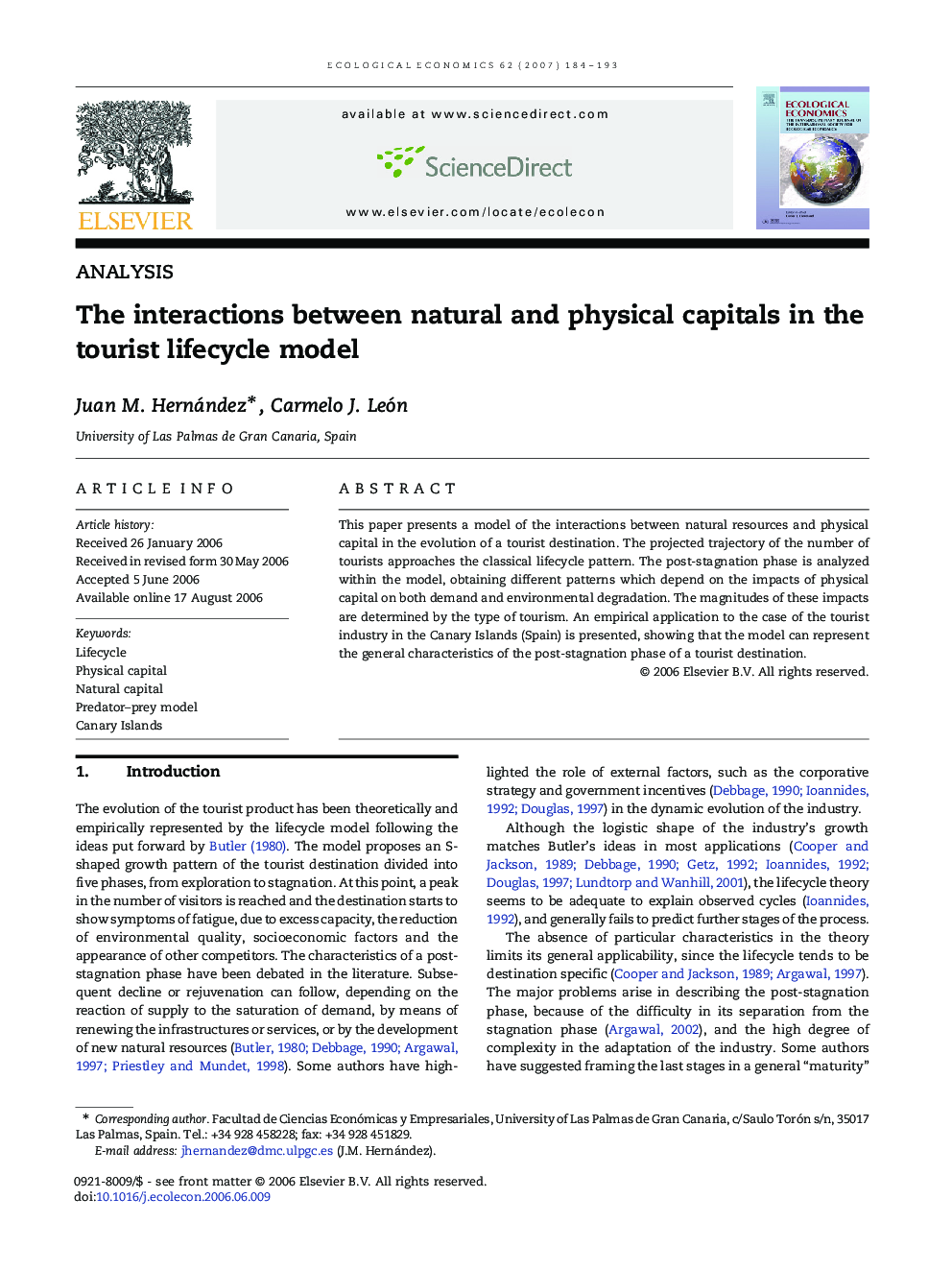| Article ID | Journal | Published Year | Pages | File Type |
|---|---|---|---|---|
| 5051739 | Ecological Economics | 2007 | 10 Pages |
Abstract
This paper presents a model of the interactions between natural resources and physical capital in the evolution of a tourist destination. The projected trajectory of the number of tourists approaches the classical lifecycle pattern. The post-stagnation phase is analyzed within the model, obtaining different patterns which depend on the impacts of physical capital on both demand and environmental degradation. The magnitudes of these impacts are determined by the type of tourism. An empirical application to the case of the tourist industry in the Canary Islands (Spain) is presented, showing that the model can represent the general characteristics of the post-stagnation phase of a tourist destination.
Related Topics
Life Sciences
Agricultural and Biological Sciences
Ecology, Evolution, Behavior and Systematics
Authors
Juan M. Hernández, Carmelo J. León,
